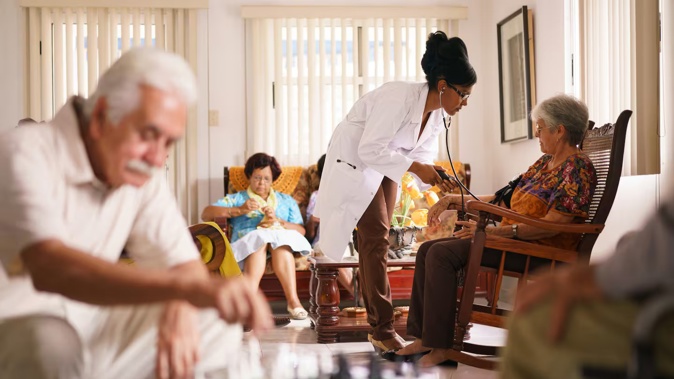
- A healthcare model by Kiwi dietitians to combat geriatric malnutrition is gaining international attention.
- The model improves nutrition by involving aged care residents in menu design and food preparation.
- Malnutrition is a silent epidemic for our ageing population, especially for older Māori and Pacific peoples.
A healthcare model designed by Kiwi dietitians to address growing rates of geriatric malnutrition is receiving international attention after being showcased at a global congress on ageing.
New Zealand has one of the world’s highest rates of malnutrition among older adults with a recent study finding that up to 93% of those entering aged care in New Zealand are malnourished or at risk, compared with 20-50% of older adults in other countries. Māori are also at significantly greater risk of malnutrition than non-Māori.
New Zealand dietitians presented their model of nutrition to the aged care at the 6th World Congress on Ageing and Geriatrics in Prague, and have since been approached by healthcare providers and conference organisers around the world to discuss their approach.
The model is adaptive to specific food intolerances, allergies and other dietary and cultural needs and works by giving aged care residents a high level of control over their menu design, recipe creation and food preparation and allowing them to work closely with, and in some cases, educate professional chefs.
Emily Jakubcik, Arvida dietitian and head of food service, says malnutrition in older people can contribute to reduced physical and cognitive functional status, increased utilisation of health care services, premature institutionalisation, and increased mortality.
“To ensure this is managed appropriately from a cultural perspective, we have also established a Māori advisory board – which has overseen the introduction of traditional foods and their preparation methods for both Māori and Pacific peoples," Jakubcik says.
She says a wide range of variables contribute to the high prevalence of malnourishment in the elderly, including chronic health conditions, medication side effects, social isolation, limited mobility, and financial constraints impacting access to nutritious food.
“With research showing that almost all people entering aged care are malnourished or at nutrition risk, it presents a risk that this issue has been normalised within our society.

Emily Jakubcik.
“New Zealand has an ageing population and addressing our growing rates of malnutrition amongst this demographic will play an increasingly important role in maintaining quality of life and health outcomes.
“Malnutrition is associated with numerous health concerns including increased risk of infections, delayed wound healing, muscle wasting, and decreased immunity, it is critical that care facilities work towards a solution that recognises that weight loss doesn’t have to be a normal part of ageing.
“We are seeing significantly more older adults with allergies to foods than we were even just 10 years ago – particularly to dairy products."
A Living Well model has been developed at Arvida.
“The aim is to replicate their individualised experience of home food preparation and consumption in a care setting,” Jakubcik said.
“For some, this might mean bringing their own familiar crockery in from home or teaching chefs traditional recipes and cooking techniques, while for others with more culturally specific requirements, we have even dug a full hāngī on site to provide this style of meal preparation.”
She says the model supports over 1500 residents in 24 care centres around the country.
“Geriatric malnutrition is a growing global health crisis, silently affecting millions of older adults worldwide. It is often overlooked and underdiagnosed, leading to serious health consequences.
“This approach is based around five core tenets of aged care health including moving, engaging, thinking, eating and resting well – to allow residents to self-drive their care experience.
“We have residents who have been engaged in cooking and meal preparation as their livelihood. That’s what they’ve been doing for 60 years, as a homemaker or in a professional career. So it’s ensuring that there are opportunities to continue with what they would do at home in this environment, and that’s really what underpins eating well.
Jakubcik says they have moved away from traditional institutional practices that can contribute to malnutrition including changing the way they serve meals.
“Implementing buffet breakfast saw a shift away from institutional practice such as waking all residents at a set time and presenting them with a breakfast tray in bed.
“Instead, residents are left to wake naturally and supported to participate in choosing from a variety of breakfast items while they dine in an environment that includes the smell of warm toast and coffee; social companions and a meet and greet person who is available to support those who need it, while maintaining independence for those that do not.
“This model demonstrates how a shift in focus towards personalised care can significantly improve both nutritional outcomes and overall wellbeing for aged care residents, setting a new standard for facilities worldwide.
“By fostering a sense of community, purpose, and autonomy, it can enhance the overall quality of life for older adults. It also has the potential to reduce healthcare costs by preventing malnutrition-related complications and hospitalisations.”
Take your Radio, Podcasts and Music with you









